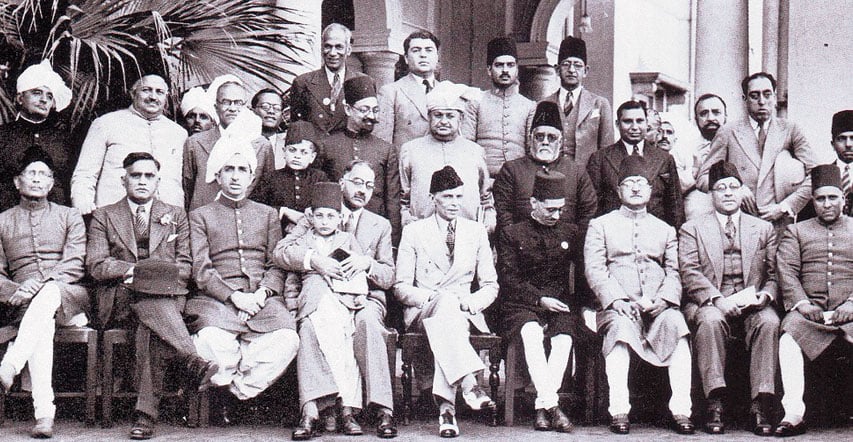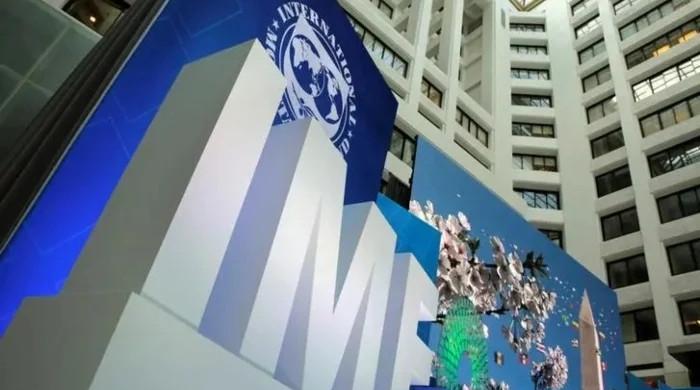Lessons to be learned from Lahore resolution
Lahore Resolution marked a pivotal moment for Indian Muslims, as it unequivocally called for independent Muslim homeland
March 23, 2024

“It is the considered view of this session of the All India Muslim League that no Constitutional Plan would be workable in this country or acceptable to the Muslims, unless it is designed on the following basic principle, namely that geographically contiguous units are demarcated into regions which should be so constituted, with such territorial readjustments as may be necessary, that the areas in which the Muslims are numerically in majority as in the North Western and Eastern Zones of India would be grouped to constitute ‘Independent States’ in which the constituent units shall be autonomous and sovereign.” Lahore resolution passed by the All-India Muslim League on March 23, 1940.
The journey for a separate homeland for the Muslims of the Indian subcontinent began in 1906 when Muslim League was formed in Dhaka reached a decisive stage when on March 23, 1940, in a large meeting of All India Muslim League (AIML) demanded for two separate Muslim states in the predominantly Muslim populated regions of north west and north east of the Indian sub-continent.
Later on, in a meeting of AIML held in Delhi in 1946, the word "states" was replaced with "state" in the form of a united Muslim country to be called as Pakistan. The resolution further stated that, “adequate, effective and mandatory safeguards shall be specifically provided in the constitution for minorities in the units and in the regions for the protection of their religious, cultural, economic, political, administrative and other rights of the minorities, with their consultation. Arrangements thus should be made for the security of Muslims where they were in a minority”.
The Lahore Resolution, presented and approved on March 23 by the All-India Muslim League, outlined three main characteristics: the establishment of a separate Muslim homeland in the Indian subcontinent, ensuring autonomy, sovereignty, and safeguarding minority rights. Prior to this resolution, the Muslim League had struggled to galvanise support for Muslim rights, performing poorly in the 1937 elections.
The Lahore Resolution marked a pivotal moment for Indian Muslims, as it unequivocally called for an independent Muslim homeland in the Muslim-majority regions of Northeast and Northwest. While Bengal, Sindh, and certain Muslim minority provinces supported this demand, Punjab, the Northwest Frontier Province, and the Baloch state of Kalat initially showed less enthusiasm. However, as the British announced their intention to leave India after World War II, the feudal and landed aristocracy of Punjab and elsewhere began to see Pakistan as a secure future for their interests.
Bengal played a decisive role from the formation of the Muslim League in 1906 until the proclamation of the Lahore Resolution on March 24, 1940, and the subsequent emergence of Pakistan as a new state on August 14, 1947. Maulvi Fazlul Haq presented the Lahore resolution on March 23, 1940, while Hussain Shaheed Soharwardy played a crucial role in mobilising support for a separate homeland for Indian Muslims. Despite more than eight decades passing since the Lahore Resolution, the original purpose of establishing a separate homeland for Indian Muslims remains unaccomplished.
An analysis of the pros and cons of the Lahore Resolution reveals three significant lessons from this pivotal moment in the history.
Firstly, the fervour and determination displayed during the Muslim League meeting in Lahore on March 23, 1940, waned over the subsequent seven years. Despite significant growth within the Muslim League during this period, its leadership failed to devise a clear vision and policy objectives for governing the new state of Pakistan. Challenges such as the resettlement of refugees, linguistic tensions between East and West Pakistan, a fragile economy, underdeveloped infrastructure, water disputes, the Kashmir issue with India, and conflicts with Afghanistan over the Pashtunistan issue emerged, posing critical challenges to the fledgling nation. The passing of Quaid-i-Azam Muhammad Ali Jinnah on September 11, 1948, and the assassination of its first prime minister, Liaquat Ali Khan, on October 16, 1951, exacerbated a serious leadership crisis that the Muslim League struggled to address.
The lack of strategic vision and foresight among the leadership of the Muslim League, following their demand for Pakistan subsequent to the proclamation of the Lahore Resolution, underscored their naivety in governing the newly formed nation, established in the name of Islam.
Sheikh Mujib-ur-Rehman, a fervent supporter and leader during the Pakistan movement, grew disillusioned with the Muslim League leadership due to their inability to safeguard autonomy and democracy in the newly formed state, as envisioned in the Lahore Resolution. The entrenchment of a bureaucratic-military nexus from the nascent stages of Pakistan, ultimately culminating in the imposition of martial law in October 1958, starkly deviated from the principles set forth in the Lahore Resolution.
The seeds of separatism in the then East Pakistan were sown when the majority of Bengalis became convinced that they would not receive equal rights under the dominance of Punjab-centered military and bureaucratic rule. The die was cast when the elites of West Pakistan refused to accept the results of the December 1970 general elections and initiated a military operation to suppress the voice of the majority party, Awami League, ultimately leading to the dissolution of Jinnah’s Pakistan.
Secondly, the realisation of Pakistan as a viable state remained incomplete due to the partitioning of Punjab and Bengal, and the failure to incorporate Jammu & Kashmir. Without securing the entirety of Punjab, Bengal, Assam, and Kashmir, Pakistan’s status remained precarious, susceptible to challenges from India and Afghanistan.
The decision of the Muslim League leadership to accept the partition plan on June 3, 1947, despite it contradicting the interests of the new Islamic state, further compounded this fragility. Moreover, the failure of the Muslim League leadership to uphold the basic tenets of the Lahore Resolution, such as sovereign equality and autonomy, fostered a sense of deprivation, initially in East Pakistan and subsequently in the minority provinces of Balochistan, NWFP, and Sindh.
Sheikh Mujib-ur-Rehman and nationalist leaders from Balochistan, NWFP, and Sindh often cited deviation from the Lahore Resolution as a major catalyst for dictatorial regimes. Despite this, post-1971 Pakistan saw forces opposing decentralisation and autonomy successfully impede functional autonomy for provinces, attempting to suppress centrifugal elements.
Thirdly, the Lahore Resolution had emphasised the protection of minority rights, yet the rise of religious extremism in Pakistan undermined these foundational principles. The subsequent surge of religious and ethnic violence both in united and post-1971 Pakistan contradicted the essence of the Lahore Resolution.
To sum up, the leadership of Pakistan post-1947 and post-1971 failed to internalise the lessons of the Lahore Resolution, lacking strategic vision, political astuteness, and a commitment to democracy, good governance, and the rule of law.
The author is Meritorious Professor of International Relations and former Dean Faculty of Social Sciences, University of Karachi, he can be reached at [email protected]
Disclaimer: The viewpoints expressed in this piece are the writer's own and don't necessarily reflect Geo.tv's editorial policy.
Originally published in The News









